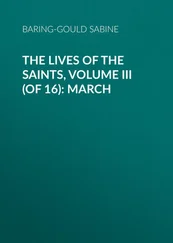Sabine Baring-Gould - Strange Survivals
Здесь есть возможность читать онлайн «Sabine Baring-Gould - Strange Survivals» — ознакомительный отрывок электронной книги совершенно бесплатно, а после прочтения отрывка купить полную версию. В некоторых случаях можно слушать аудио, скачать через торрент в формате fb2 и присутствует краткое содержание. Жанр: foreign_antique, foreign_prose, на английском языке. Описание произведения, (предисловие) а так же отзывы посетителей доступны на портале библиотеки ЛибКат.
- Название:Strange Survivals
- Автор:
- Жанр:
- Год:неизвестен
- ISBN:нет данных
- Рейтинг книги:4 / 5. Голосов: 1
-
Избранное:Добавить в избранное
- Отзывы:
-
Ваша оценка:
- 80
- 1
- 2
- 3
- 4
- 5
Strange Survivals: краткое содержание, описание и аннотация
Предлагаем к чтению аннотацию, описание, краткое содержание или предисловие (зависит от того, что написал сам автор книги «Strange Survivals»). Если вы не нашли необходимую информацию о книге — напишите в комментариях, мы постараемся отыскать её.
Strange Survivals — читать онлайн ознакомительный отрывок
Ниже представлен текст книги, разбитый по страницам. Система сохранения места последней прочитанной страницы, позволяет с удобством читать онлайн бесплатно книгу «Strange Survivals», без необходимости каждый раз заново искать на чём Вы остановились. Поставьте закладку, и сможете в любой момент перейти на страницу, на которой закончили чтение.
Интервал:
Закладка:
The following story is told of several churches in Europe. The masons could not get the walls to stand, and they resolved among themselves to bury under them the first woman or child that came to their works. They took oath to this effect. The first to arrive was the wife of the master-mason, who came with the dinner. The men at once fell on her and walled her into the foundations. One version of the story is less gruesome. The masons had provided meat for their work, and the wife of the master had dealt so carelessly with the provision, that it ran out before the building was much advanced. She accordingly put the remaining bones into a cauldron, and made a soup of vegetables. When she brought it to the mason, he flew into a rage, and built the cauldron and bones into the wall, as a perpetual caution to improvident wives. This is the story told of the church of Notre Dame at Bruges, where the cauldron and bones are supposed to be still seen in the wall. At Tuckebrande are two basins built into the wall, and various legends not agreeing with one another are told to account for their presence. Perhaps these cauldrons contained the blood of victims of some sort immured to secure the stability of the edifice. 3 3 These cauldrons walled into the sides of the churches are probably the old sacrificial cauldrons of the Teutons and Norse. When heathenism was abandoned, the instrument of the old Pagan rites was planted in the church wall in token of the abolition of heathenism.
A very curious usage prevails in Roumania and Transylvania to the present day, which is a reminiscence of the old interment in the foundations of a house. When masons are engaged on the erection of a new dwelling, they endeavour to catch the shadow of a stranger passing by and wall it in, and throw in stones and mortar whilst his shadow rests on the walls. If no one goes by to cast his shade on the stones, the masons go in quest of a woman or child, who does not belong to the place, and, unperceived by the person, apply a reed to the shadow, and this reed is then immured; and it is believed that when this is done, the woman or child thus measured will languish and die, but luck attaches to the house. In this we see the survival of the old confusion between soul and shade. The Manes are the shadows of the dead. In some places it is said that a man who has sold his soul to the devil is shadowless, because soul and shadow are one. But there are other instances of substitution hardly less curious. In Holland have been found immured in foundations curious objects like ninepins, but which are really rude imitations of babes in their swaddling-bands. When it became unlawful to bury a child, an image representing it was laid in the wall in its place. Another usage was to immure an egg. The egg had in it life, but undeveloped life, so that by walling it in the principle of sacrificing a life was maintained without any shock to human feelings. Another form of substitution was that of a candle. From an early period the candle was burnt in place of the sacrifice of a human victim. At Heliopolis, till the reign of Amasis, three men were daily sacrificed; but when Amasis expelled the Hyksos kings, he abolished these human offerings, and ordered that in their place three candles should be burned daily on the altar. In Italy, wax figures, sometimes figures of straw, were burnt in the place of the former bloody sacrifices.
In the classic tale, at the birth of Meleager, the three fates were present; Atropos foretold that he would live as long as the brand then burning on the hearth remained unconsumed; thereupon his mother, Althæa, snatched it from the fire, and concealed it in a chest. When, in after years, Meleager slew one of his mother’s brothers, she, in a paroxysm of rage and vengeance, drew forth the brand, and burnt it, whereupon Meleager died.
In Norse mythology a similar tale is found. The Norns wandered over the earth, and were one night given shelter by the father of Nornagest; the child lay in a cradle, with two candles burning at the head. The first two of the Norns bestowed luck and wealth on the child; but the third and youngest, having been thrust from her stool in the crush, uttered the curse, “The child shall live no longer than these candles burn.” Instantly the eldest of the fateful sisters snatched the candles up, extinguished them, and gave them to the mother, with a warning to take good heed of them.
A story found in Ireland, and Cornwall, and elsewhere, is to this effect. A man has sold himself to the devil. When the time comes for him to die, he is in great alarm; then his wife, or a priest, persuades the devil to let him live as long as a candle is unconsumed. At once the candle is extinguished, and hidden where it can never be found. It is said that a candle is immured in the chancel wall of Bridgerule Church, no one knows exactly where. A few years ago, in a tower of St. Osyth’s Priory, Essex, a tallow candle was discovered built in.
As the ancients associated shadow and soul, so does the superstitious mind nowadays connect soul with flame. The corpse-candle which comes from a churchyard and goes to the house where one is to die, and hovers on the doorstep, is one form of this idea. In a family in the West of England the elder of two children had died. On the night of the funeral the parents saw a little flame come in through the key-hole and run up to the side of the cradle where the baby lay. It hovered about it, and presently two little flames went back through the key-hole. The baby was then found to be dead.
In the Arabic metaphysical romance of “Yokkdan,” the hero, who is brought up by a she-goat on a solitary island, seeks to discover the principle of life. He finds that the soul is a whitish luminous vapour in one of the cavities of the heart, and it burns his finger when he touches it.
In the German household tale of “Godfather Death,” a daring man enters a cave, where he finds a number of candles burning; each represents a man, and when the light expires, that man whom it represents dies. “Jack o’ lanterns” are the spirits of men who have removed landmarks. One of Hebel’s charming Allemanic poems has reference to this superstition.
The extinguished torch represents the departed life, and in Yorkshire it was at one time customary to bury a candle in a coffin, the modern explanation being that the deceased needed it to light him on his road to Paradise; but in reality it represented an extinguished life, and probably was a substitute for the human sacrifice which in Pagan times accompanied a burial. In almost all the old vaults opened in Woodbury Church, Devon, candles have been found affixed to the walls. The lamps set in graves in Italy and Greece were due to the same idea. The candle took the place of a life, as a dog or sow in other places was killed instead of a child.
It is curious and significant that great works of art and architecture should be associated with tragedies. The Roslyn pillar, the Amiens rose window, the Strassburg clock, many spires, and churches. The architect of Cologne sold himself to the devil to obtain the plan. A master and an apprentice carve pillars or construct windows, and because the apprentice’s work is best, his master murders him. The mechanician of a clock is blinded, some say killed, to prevent him from making another like it. Perdix, for inventing the compass, was cast down a tower by Daedalus.
It will be remembered that the architect of Cologne Cathedral, according to the legend, sold himself to the devil for the plan, and forfeited his life when the building was in progress. This really means that the man voluntarily gave himself up to death, probably to be laid under the tower or at the foundation of the choir, to ensure the stability of the enormous superstructure, which he supposed could not be held up in any other way.
Читать дальшеИнтервал:
Закладка:
Похожие книги на «Strange Survivals»
Представляем Вашему вниманию похожие книги на «Strange Survivals» списком для выбора. Мы отобрали схожую по названию и смыслу литературу в надежде предоставить читателям больше вариантов отыскать новые, интересные, ещё непрочитанные произведения.
Обсуждение, отзывы о книге «Strange Survivals» и просто собственные мнения читателей. Оставьте ваши комментарии, напишите, что Вы думаете о произведении, его смысле или главных героях. Укажите что конкретно понравилось, а что нет, и почему Вы так считаете.












